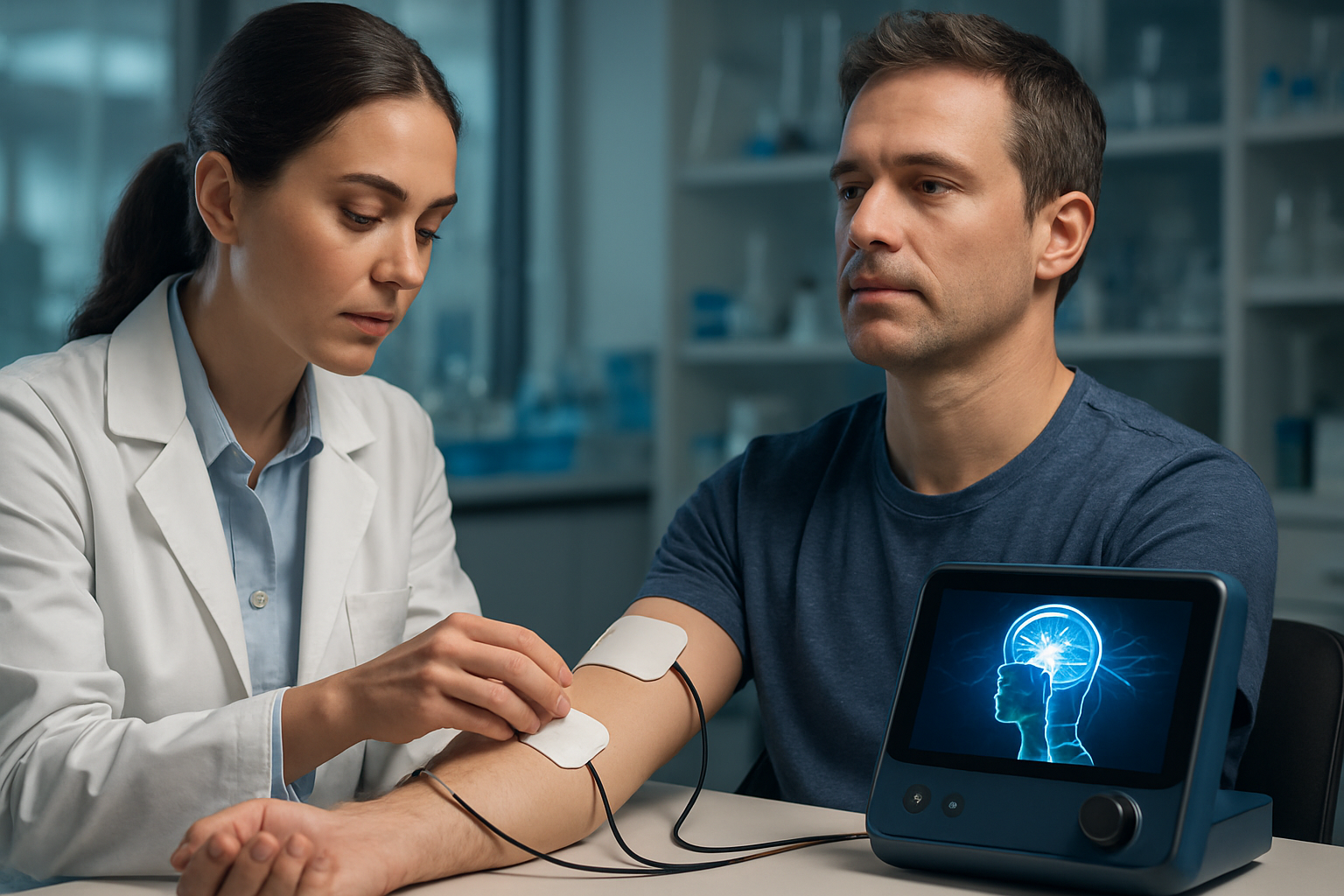Bioelectrical Medicine: The Future of Non-Invasive Healing
Imagine a world where chronic pain, inflammation, and even some neurological disorders could be treated without medication or invasive procedures. This isn't science fiction—it's the promising realm of bioelectrical medicine, a cutting-edge field that's revolutionizing our approach to healing and wellness.

The concept of using electricity for medical purposes isn’t entirely new—ancient Egyptians used electric fish to treat pain as far back as 2500 BCE. However, modern bioelectrical medicine takes this idea to unprecedented levels of precision and effectiveness. Today’s technologies can target specific nerve pathways with exquisite accuracy, offering the potential for highly tailored treatments with minimal side effects.
Understanding the Body’s Electrical Language
Our bodies are constantly buzzing with electrical activity. From the beating of our hearts to the firing of neurons in our brains, electricity plays a crucial role in virtually every biological process. Bioelectrical medicine seeks to decode this complex electrical language and use it to our advantage.
One of the key players in this field is the vagus nerve, often referred to as the body’s information superhighway. This extensive nerve network connects the brain to various organs, including the heart, lungs, and digestive system. By stimulating the vagus nerve with carefully calibrated electrical impulses, researchers have shown promising results in treating conditions ranging from rheumatoid arthritis to depression.
Groundbreaking Applications in Chronic Disease Management
The potential applications of bioelectrical medicine are vast and growing. One area of particular interest is the treatment of inflammatory diseases. Traditional approaches often rely on systemic medications that can have significant side effects. In contrast, bioelectrical treatments can target specific inflammatory pathways with precision, potentially offering relief without the drawbacks of pharmaceutical interventions.
For instance, a recent study published in the Journal of Experimental Medicine demonstrated that vagus nerve stimulation could significantly reduce inflammation in patients with rheumatoid arthritis. This breakthrough offers hope for millions suffering from chronic inflammatory conditions, suggesting a future where electrical impulses might replace or complement traditional drug therapies.
Neurological Frontiers: Rewiring the Brain
Perhaps one of the most exciting frontiers in bioelectrical medicine is its potential to treat neurological disorders. Conditions like Parkinson’s disease, epilepsy, and even some forms of depression are increasingly being viewed through the lens of electrical dysfunction in the brain.
Deep brain stimulation (DBS), a technique that involves implanting electrodes in specific areas of the brain, has already shown remarkable results in treating Parkinson’s disease. Now, researchers are exploring non-invasive methods of achieving similar results. Transcranial magnetic stimulation (TMS), for example, uses magnetic fields to induce electrical currents in targeted brain regions, offering potential treatments for depression and other mental health conditions without the need for surgery.
The Promise of Personalized Treatment
One of the most compelling aspects of bioelectrical medicine is its potential for personalization. As our understanding of individual electrical signatures grows, so does the possibility of tailoring treatments to each patient’s unique physiology. This level of customization could dramatically improve treatment efficacy while minimizing side effects.
Imagine a future where a simple scan could map your body’s electrical patterns, allowing doctors to design a bespoke treatment plan that addresses your specific health concerns with pinpoint accuracy. This isn’t just a pipe dream—it’s a goal that researchers in the field are actively working towards.
Electrifying Facts about Bioelectrical Medicine
• The human body generates enough electricity in a day to power a small light bulb for about 30 minutes.
• The first modern pacemaker, implanted in 1958, was inspired by an electrical circuit in a musical metronome.
• Bioelectrical treatments have shown promise in accelerating wound healing by up to 50%.
• Some fish, like the electric eel, can generate electric fields strong enough to stun prey or ward off predators.
• Researchers are exploring bioelectrical approaches to treat antibiotic-resistant infections, potentially offering a new weapon against superbugs.
A Glimpse into the Future of Healing
As we stand on the brink of this bioelectrical revolution in medicine, the possibilities seem almost limitless. From treating chronic pain to rewiring neural pathways, the ability to harness and modulate our body’s electrical systems opens up exciting new avenues for healing and wellness.
While challenges remain—including the need for more extensive clinical trials and regulatory approvals—the potential benefits of bioelectrical medicine are too significant to ignore. As this field continues to evolve, it promises to transform our approach to health and disease, offering hope for millions seeking effective, non-invasive treatments for a wide range of conditions.





